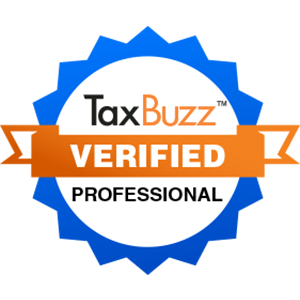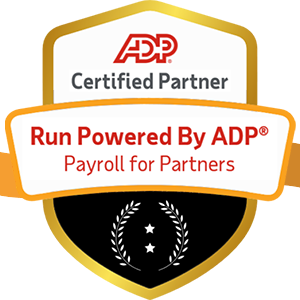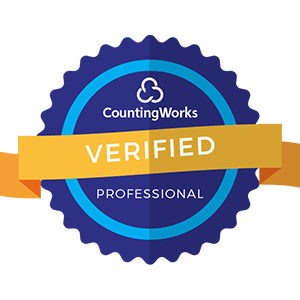
The Risk Reality: Workforce-related risks cost organizations an average of $15.4 million annually in lost productivity, legal fees, and turnover expenses. Companies with mature people risk management programs report 43% fewer workforce disruptions and 31% higher employee retention rates. Yet 72% of organizations lack systematic approaches to identifying and mitigating workforce risks before they become business crises.
Modern business operations face unprecedented volatility, with workforce-related risks emerging as primary threats to organizational stability and growth. The traditional approach of reactive problem-solving has become inadequate for managing increasingly complex people challenges that can rapidly escalate from minor issues to major business disruptions.
The financial impact of unmanaged workforce risks extends far beyond immediate costs to encompass long-term competitive disadvantage. Organizations experiencing significant workforce disruptions require an average of 18 months to fully recover operational effectiveness, during which they lose market share, customer confidence, and institutional knowledge that may never be fully restored.
Recent global events have demonstrated how quickly workforce landscapes can shift, making risk management capabilities essential for business continuity. Companies with robust people risk frameworks weathered disruptions more effectively while maintaining employee engagement and operational performance during crisis periods.
The most successful organizations treat workforce risk management as a core competency rather than an HR administrative function, integrating people risk considerations into strategic planning, operational decision-making, and performance measurement systems.

Contemporary workforce risks encompass a broader range of potential disruptions than traditional HR challenges, reflecting the complexity of modern employment relationships and business environments.
Skills shortages in critical areas create cascading risks that affect product development, customer service, and growth initiatives. The half-life of technical skills continues shrinking while demand for specialized capabilities outpaces supply in most markets.
Competition for talent has intensified across industries, with employees demonstrating increased willingness to change positions for better opportunities. Average voluntary turnover rates have increased 38% over pre-pandemic levels, with particularly acute challenges in technology, healthcare, and skilled trades.
Geographic talent distribution mismatches create regional vulnerabilities where organizations cannot access required capabilities locally while remote work limitations prevent global talent access for certain roles.
Succession planning gaps leave organizations vulnerable to disruption when key personnel leave unexpectedly. Research indicates that 45% of organizations lack identified successors for critical leadership positions.
Employee disengagement costs organizations up to $550 billion annually in lost productivity, with disengaged employees delivering 18% lower productivity and 37% higher absenteeism than their engaged counterparts.
Remote and hybrid work arrangements, while offering flexibility benefits, create new risks around cultural cohesion, knowledge transfer, and performance management that traditional approaches struggle to address effectively.
Burnout rates have reached epidemic proportions across industries, with 76% of employees reporting moderate to high burnout levels. This condition leads to increased errors, reduced innovation, and accelerated turnover that compounds organizational challenges.
Generational differences in work expectations create tension points that require careful management to prevent fragmentation and maintain productive working relationships across age groups.
Evolving employment laws and regulations create ongoing compliance challenges, with penalties for violations reaching millions of dollars while causing lasting reputational damage.
Pay equity and discrimination issues carry significant legal and financial risks, with average settlement amounts exceeding $500,000 per case while class-action lawsuits can reach tens of millions in damages.
Data privacy and security requirements around employee information continue expanding, with breaches of HR data carrying both regulatory penalties and employee trust consequences.
Workplace safety obligations extend beyond physical environments to include psychological safety and harassment prevention, with organizations facing increased liability for creating and maintaining healthy work environments.
Several macro-level trends amplify workforce risks while creating new categories of potential disruption that organizations must proactively address.
Technology adoption creates displacement risks for workers whose roles become automated while simultaneously creating demand for new skills that may be difficult to source or develop internally.
Cybersecurity threats increasingly target human vulnerabilities through social engineering and phishing attacks, making employee awareness and behavior critical components of organizational security posture.
Digital divide issues affect both recruiting capabilities and employee productivity, with technology access and literacy becoming determinants of workforce effectiveness.
Increased activism and social awareness among employees create expectations for organizational positions on political and social issues, with potential backlash regardless of stance taken.
Diversity, equity, and inclusion initiatives, while beneficial, create implementation risks if poorly executed or perceived as superficial, potentially causing more harm than benefit to organizational culture.
Mental health awareness has created obligations for workplace support that many organizations struggle to fulfill effectively, leading to increased liability and employee dissatisfaction.
Economic uncertainty drives workforce planning challenges as organizations struggle to balance cost management with talent retention during periods of instability.
Industry disruption creates obsolescence risks for certain skill sets while creating urgent demand for new capabilities that may not be readily available in existing workforce or external markets.
Inflation and cost-of-living pressures affect compensation competitiveness and employee financial stress, influencing retention and engagement across all organizational levels.

Effective workforce risk management requires systematic approaches to identification, evaluation, and prioritization that enable proactive intervention before issues escalate to crisis levels.
Multi-stakeholder assessment processes engage leaders from all business functions to identify potential workforce risks from diverse perspectives including operations, finance, legal, and customer-facing roles.
Environmental scanning monitors external trends including economic indicators, regulatory changes, technological developments, and social movements that could affect workforce stability and requirements.
Internal analysis examines organizational data including turnover patterns, engagement scores, skills assessments, and demographic trends to identify emerging risk indicators before they become apparent through operational impact.
Scenario planning explores potential future states and their workforce implications, enabling preparation for various disruption scenarios rather than assuming continued stability.
Financial modeling estimates potential costs of various workforce disruptions including direct expenses like recruitment and training alongside indirect costs such as lost productivity and customer impact.
Probability assessment evaluates likelihood of different risk scenarios based on historical data, current indicators, and expert judgment to prioritize mitigation efforts appropriately.
Timeline analysis determines potential speed of risk escalation to understand urgency requirements and appropriate intervention windows for different types of workforce challenges.
Interdependency mapping identifies how workforce risks might cascade through organizational systems, affecting multiple business areas simultaneously and amplifying overall impact.
Risk matrices plot probability against impact to visualize which workforce risks require immediate attention versus those that can be monitored and addressed through longer-term planning.
Resource allocation decisions balance mitigation costs against potential risk impact, ensuring that limited resources focus on highest-value interventions rather than spreading efforts too thin across all identified risks.
Stakeholder impact assessment considers how different workforce risks affect various constituencies including employees, customers, investors, and community members to inform prioritization decisions.
Successful workforce risk management combines immediate protective measures with longer-term capability building that creates organizational resilience against future challenges.
Strategic workforce planning anticipates future skill requirements based on business strategy and market trends, enabling proactive development and recruitment rather than reactive gap-filling.
Multiple sourcing strategies reduce dependency on single talent channels while building relationships with educational institutions, professional associations, and industry networks that provide ongoing access to emerging talent.
Internal mobility programs create redundancy and flexibility by developing employees' capabilities across multiple functions, reducing vulnerability to key person dependencies while enhancing engagement through growth opportunities.
Succession planning extends beyond executive levels to encompass all critical roles, ensuring continuity plans exist for both planned and unexpected departures.
Proactive culture management identifies and addresses cultural risks before they manifest as engagement or performance problems, maintaining positive work environments that support retention and productivity.
Communication strategy development ensures consistent, transparent messaging during both stable periods and times of change, preventing misunderstandings and rumors that can escalate into larger issues.
Recognition and reward system optimization aligns incentives with desired behaviors while ensuring competitive compensation that reduces turnover risk.
Leadership development programs build management capabilities that prevent common supervisory failures which often trigger employee departures and engagement problems.
Policy and procedure development creates clear guidelines for handling common workforce situations while ensuring compliance with applicable laws and regulations.
Training and awareness programs build employee capabilities for recognizing and reporting potential issues before they escalate, creating early warning systems that enable proactive intervention.
Technology solutions automate routine compliance monitoring while providing analytics that identify emerging patterns requiring management attention.
Vendor and partnership relationships provide access to specialized expertise and resources for handling complex workforce issues that exceed internal capabilities.
Organizations successfully implementing workforce risk management programs follow structured approaches that build capability systematically while demonstrating value through measurable improvements.
Executive sponsorship ensures adequate resources and organizational priority for workforce risk management while creating accountability for results at the highest organizational levels.
Cross-functional risk committees bring together representatives from HR, legal, finance, operations, and business units to provide comprehensive perspective on workforce risks and mitigation strategies.
Clear roles and responsibilities define who handles different types of workforce risks while establishing escalation procedures for situations requiring senior management involvement.
Regular reporting and review cycles maintain focus on workforce risk management while enabling course corrections based on changing circumstances and new information.
Stakeholder engagement builds understanding and support for workforce risk management initiatives while addressing concerns about additional bureaucracy or process overhead.
Training programs develop risk identification and response capabilities throughout the organization rather than concentrating expertise solely within HR or risk management functions.
Success communication demonstrates value of workforce risk management through specific examples and measurable improvements, building organizational confidence and continued investment.
Continuous improvement processes refine approaches based on experience and feedback while incorporating new best practices and emerging risk considerations.
Human capital analytics platforms provide real-time visibility into workforce trends and risk indicators while enabling predictive modeling that anticipates potential issues.
Integration with business systems ensures workforce risk information connects with operational and financial data for comprehensive organizational risk assessment.
Automated alerting systems notify appropriate personnel when key risk indicators exceed established thresholds, enabling rapid response before situations deteriorate.
Benchmarking capabilities compare organizational performance against industry standards and peer organizations to identify relative risk positions and improvement opportunities.

Effective workforce risk management programs demonstrate value through multiple metrics that track both risk reduction and positive business outcomes.
Incident frequency tracking measures how often workforce-related disruptions occur compared to baseline periods before risk management implementation.
Severity assessment evaluates the impact of workforce issues that do occur, demonstrating whether mitigation efforts reduce consequences even when complete prevention isn't possible.
Response time analysis measures how quickly organizations identify and address workforce risks, with faster response typically correlating with reduced impact.
Cost avoidance calculations estimate expenses prevented through proactive risk management compared to reactive crisis response approaches.
Employee retention rates provide direct measures of workforce stability while indicating effectiveness of engagement and satisfaction initiatives.
Productivity metrics reveal whether workforce risk management contributes to sustained high performance rather than simply preventing problems.
Customer satisfaction scores often correlate with workforce stability and engagement, providing external validation of risk management effectiveness.
Financial performance analysis examines whether workforce risk management contributes to revenue growth and profitability through reduced disruption and enhanced capability.
Engagement survey results provide early warning signs of potential workforce issues before they manifest as turnover or performance problems.
Skills assessment outcomes identify capability gaps before they affect business operations or customer service.
Cultural health measurements reveal organizational climate issues that could escalate into more serious problems if left unaddressed.
Compliance audit results indicate effectiveness of risk prevention measures while identifying areas requiring additional attention.
The workforce risk landscape continues evolving as new technologies, social trends, and business models create novel challenges requiring adaptive management approaches.
Artificial intelligence and automation will continue reshaping work requirements while creating new categories of workforce risk related to job displacement and skills obsolescence.
Remote work technologies enable global talent access while creating new risks around data security, cultural cohesion, and performance management across distributed teams.
Digital wellness becomes increasingly important as technology integration affects employee mental health and work-life balance in ways that require proactive management.
Generational workforce changes will continue affecting expectations around work arrangements, career development, and organizational purpose, requiring ongoing adaptation of people practices.
Regulatory expansion in areas like pay transparency, algorithmic bias, and workplace surveillance will create new compliance obligations while affecting traditional HR practices.
Social activism and corporate responsibility expectations will continue influencing workforce dynamics as employees increasingly expect employers to take positions on societal issues.
Climate change will affect workforce planning through both physical risks like extreme weather and transition risks as industries adapt to sustainability requirements.
Economic volatility will require more flexible workforce planning approaches that can rapidly adjust to changing business conditions while maintaining employee security.
Global talent mobility may be affected by political and economic tensions that influence immigration policies and international business relationships.
Organizations building workforce risk management capabilities benefit from phased approaches that establish foundation elements before adding advanced analytics and predictive capabilities.
Current state assessment evaluates existing workforce risks and management capabilities while identifying priority areas for initial focus based on business impact and implementation feasibility.
Basic policies and procedures establish minimum standards for handling common workforce situations while ensuring legal compliance and consistent treatment.
Initial metrics development creates baseline measurements for key workforce indicators while establishing reporting systems that provide ongoing visibility.
Stakeholder education builds awareness of workforce risk management importance while securing commitment for necessary resources and organizational changes.
Advanced analytics implementation provides deeper insights into workforce trends and risk patterns while enabling more sophisticated prediction and prevention capabilities.
Process automation reduces manual effort required for routine risk management tasks while improving consistency and response times.
Cross-functional integration connects workforce risk management with broader organizational risk and strategic planning processes.
Specialized expertise development builds internal capabilities for handling complex situations while establishing relationships with external resources for specialized needs.
Predictive modeling enables anticipation of future workforce risks based on current indicators and historical patterns, shifting from reactive to proactive management.
Continuous improvement processes regularly refine approaches based on experience and changing conditions while incorporating industry best practices and emerging research.
Strategic integration aligns workforce risk management with business strategy and competitive positioning, making people risk considerations integral to major organizational decisions.
Workforce risk management represents a fundamental shift from reactive problem-solving to proactive capability building that positions organizations for sustained success despite inevitable disruptions and challenges.
The organizations that will thrive in increasingly volatile business environments are those that develop sophisticated understanding of their workforce risks while building systematic capabilities for prevention, mitigation, and rapid response when issues do occur.
This transformation requires commitment from the highest organizational levels along with sustained investment in people, processes, and technologies that enable effective risk management. However, the returns on this investment—measured in reduced disruption, improved performance, and enhanced competitive positioning—justify the effort required.
The future belongs to organizations that understand workforce risk management as a strategic capability rather than an administrative burden. By building robust people risk frameworks, companies create competitive advantages that enable them to attract better talent, maintain higher performance, and navigate challenges that overwhelm less prepared competitors.
The choice facing business leaders is not whether workforce risks will emerge—they inevitably will—but whether their organizations will be prepared to manage these risks effectively or will find themselves reactive and vulnerable when challenges arise. Those who choose proactive workforce risk management position themselves for sustained success regardless of what uncertainties the future may bring.


